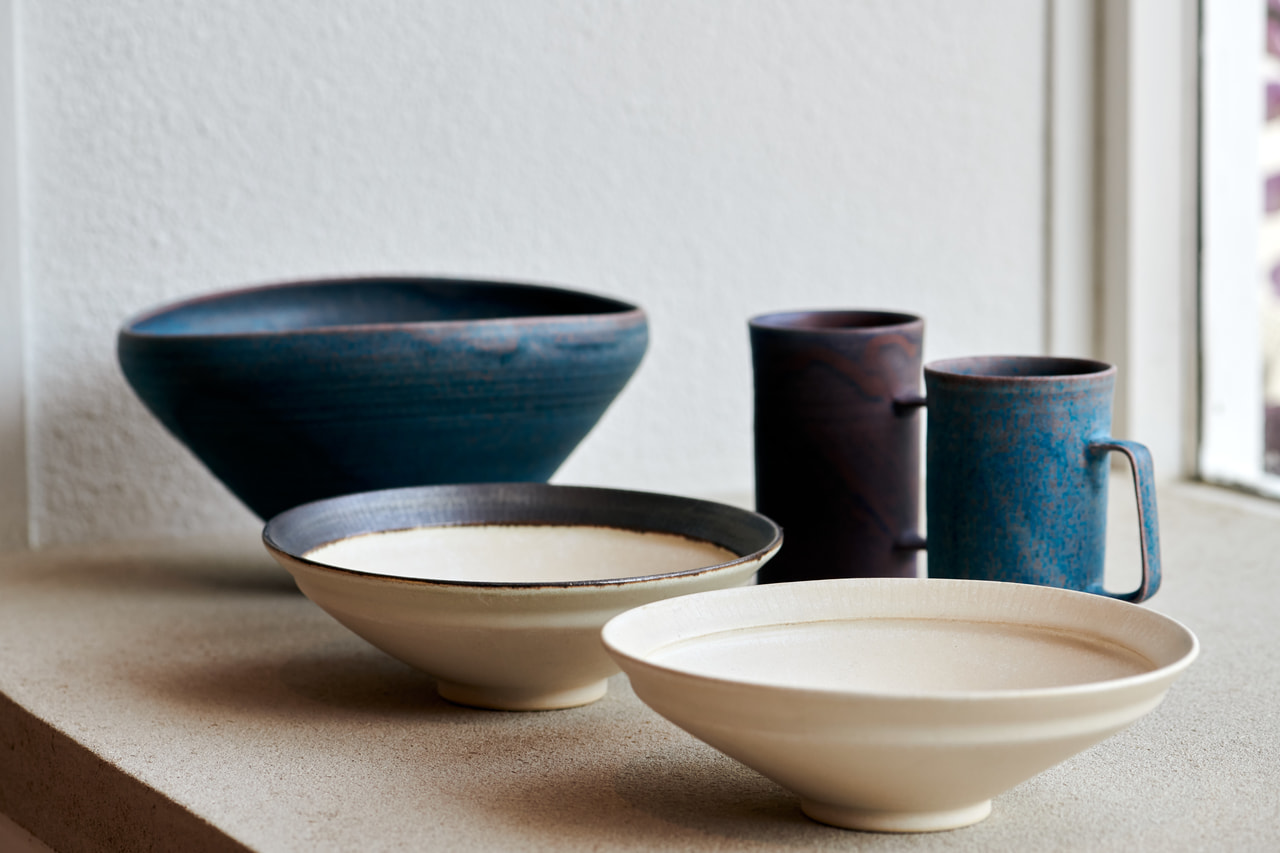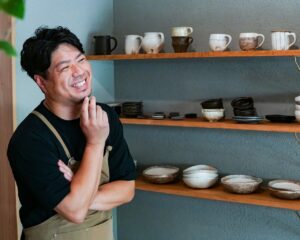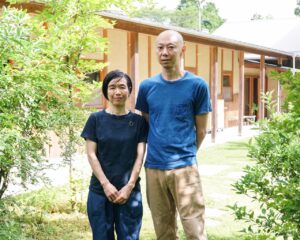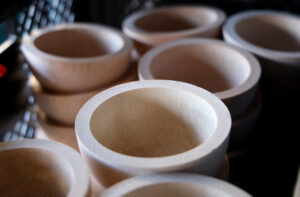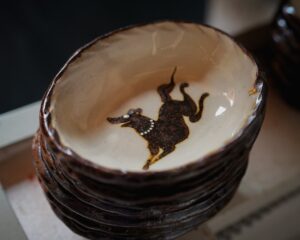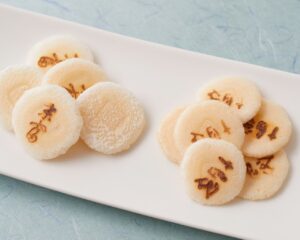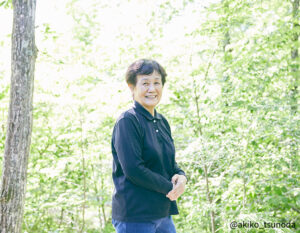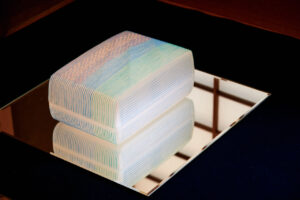Kiyomizu-yaki, Kyoto’s representative pottery, may remind many people of Japanese-style dishes with gorgeous painted decoration. The ceramic artist Kiyomizu Daisuke creates pottery that is far from such an image and is supported by young consumers and professional chefs.
Craftsmen working in his studio can be seen. TOKINOHA Ceramic Studio in Kiyomizuyaki Danchi, Kyoto
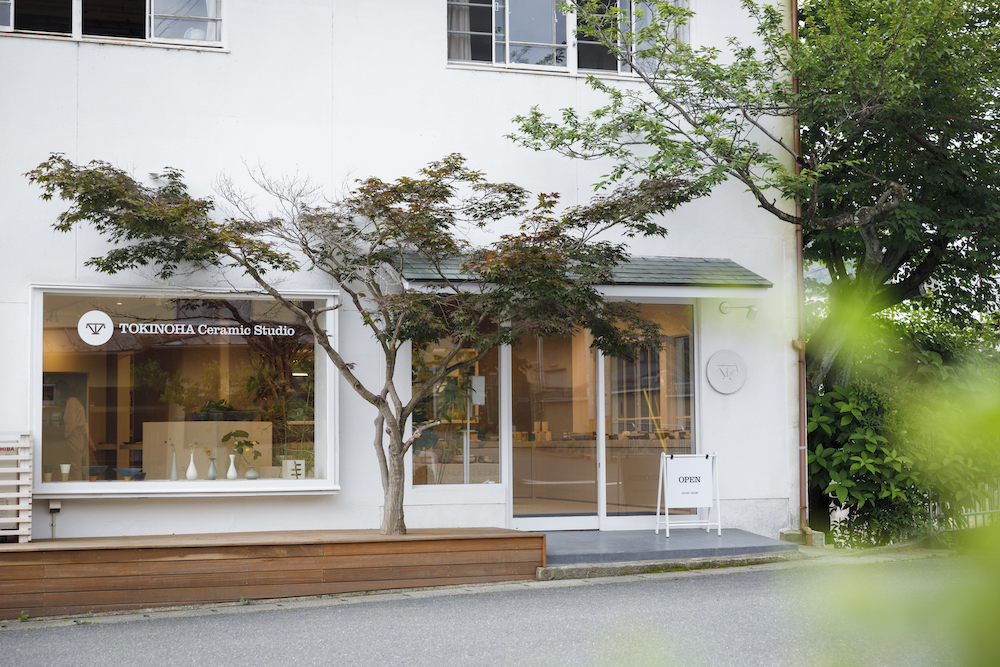
The Kiyomizuyaki Industrial Park in Yamashina-ku, located in the eastern part of Kyoto City and bordering Shiga Prefecture, is an industrial park developed in the 1960s and is lined with ceramic artists’ stores, studios, and stores selling materials. In one corner is TOKINOHA Ceramic Studio, run by Mr. Shimizu and his ceramist wife, Tomoe.
The store in front of you as soon as you enter is their brand TOKINOHA. The shop offers a wide variety of pottery in a space where visitors can choose pottery while watching craftsmen at work in the studio through a glass window.
The simple shapes and colors make you want to keep them by your side every day. Yet, they are stylish enough to lift the spirits of those who use them. However, they may not be what you would call “Kyoto-like” tableware. In fact, some of my competitors have said to me, ‘This is not Kiyomizu-yaki,'” says Shimizu.

What are the Characteristics of Kiyomizuyaki?
In fact, however, there are no rules regarding the materials and techniques used in Kiyomizuyaki. Kiyomizuyaki is a type of pottery that originated in the Azuchi-Momoyama to early Edo periods, when the tea ceremony was popular, and artisans from all over Japan were called to the capital of Kyoto to make vessels using techniques from various regions in response to requests from the authorities and cultural figures of the time. Therefore, Kiyomizuyaki is filled with the essence of the whole country, and people are free to choose how they want to use it.
He says, “With the spirit of creating something from here, we search for clay from all over the country and bake the best products. Perhaps that spirit is what Kiyomizuyaki is all about. I hope to tell people through my work that there is such a thing as Kiyomizuyaki,” says Mr. Shimizu.
How did Mr. Shimizu arrive at his current style?
The concept of “Kiyomizuyaki for the appreciation of life,” a concept that has undergone numerous changes

Mr. Shimizu was born in an area called Iwakura, south of Sakyo-ku, which occupies the northeastern part of Kyoto City from north to south. He was born and raised in a family of potters: his great-grandfather was Rokubei Shimizu V, a Kiyomizu-yaki potter who has been a master since the mid-Edo period, and his father, Hisashi Shimizu, is also a potter. His father, Hisashi Shimizu, was also a potter. After graduating from high school, however, he entered the Department of Environmental Design at Kyoto Prefectural University and majored in architecture. At that time, he did not envision a future as a ceramic artist at all.
The change came while he was still a student at the university. He chose the field of architecture because of his love of making things, but as he studied, he became aware of the many restrictions. At that time, he saw Hisashi devote himself to creating ceramics and thought, “My father is doing interesting things,” and decided to pursue ceramics as a career himself. After graduating from college, he studied ceramics at the Kyoto Prefectural College of Ceramic Technology, and after completing his studies, he became an apprentice to Yuichi Inokai, apotter who was a member of the Japan Crafts Association and had won numerous awards at domestic craft exhibitions. Here, however, Shimizu ran into a wall.
The pottery he had made to “win” did not stick. The days of no response from customers were hard.
At the time, Mr. Shimizu was working to exhibit his work in exhibitions, and he was desperate to create works that would leave a lasting impression and not be outdone by other exhibitors. He was desperate to create works that would be as impressive as those of the other exhibitors.
Tokinoha Ceramics was located in the city center, and people who happened to pass by often took a peek inside. However, many of these people would look at the whole place vaguely, and then simply walk out.
This ” non-response” was hard on Shimizu. As he repeated this experience, he began to feel that something was different about his previous works.
A simple vessel, stripped of individuality, is the result.
Shimizu began to actively listen to the comments of customers and friends from other industries who told him what they thought of his work.
They said, “It is interesting as a work of art, but it is not suitable for daily use.
If this part were a little different, it would be easier to use.
Shimizu’s goal was to create vessels that people of his own generation would want to use. He began to use a variety of techniques and to eliminate the decorations.
Around that time, Shimizu stopped exhibiting his work at exhibitions. He also settled on the brand concept of ” vessels that accompany people in their daily lives.
He says, “Even if I could create a piece that stood out in a group exhibition and win, it would be meaningless if people did not use it. Rather than trying to win with a single piece, I wanted people to feel something when they saw a “group” of my work. When I realized how to do that, I felt as if I had a breakthrough.
Because you can’t cheat on the number of pieces, it’s the plain dishes that are the hardest to make.
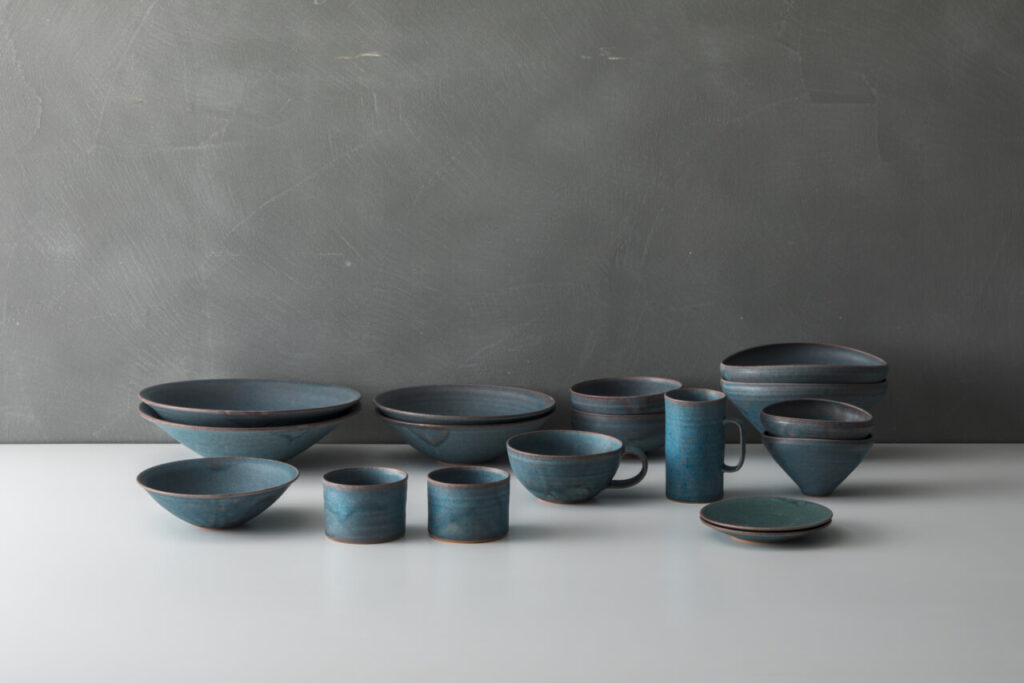
Around this time, Mr. and Mrs. Shimizu moved their base of operations to Kiyomizuyaki Danchi and changed their brand name from ” TOKINOHA Tobo” to ” TOKINOHA. It was 2011 when they began to operate their studio and store under the same name.
The characteristic of TOKINOHA’s pottery, says Shimizu, is ” simple forms that at first glance appear to be nothing. For example, he says, it is difficult for a potter to create a simple form like a plain plate.
Researching glazes to create a wide variety of colors and designs
Shimizu has also been experimenting with glazes since his days at Tokinoha Tobo, creating vessels in a variety of colors.
One of his popular series is ” copper” using copper glaze. The blue color is particularly popular, and even Western chefs, who normally do not like blue dishes because it is said to be a color that reduces appetite, choose blue dishes, saying, “This blue dish can be used. This episode is typical of TOKINOHA, which is devoted to “subtractive” design and has worked to create dishes that complement the food.
To respond to the feelings of those who use it. Launching the “SOU-SIRO” brand exclusively for chefs
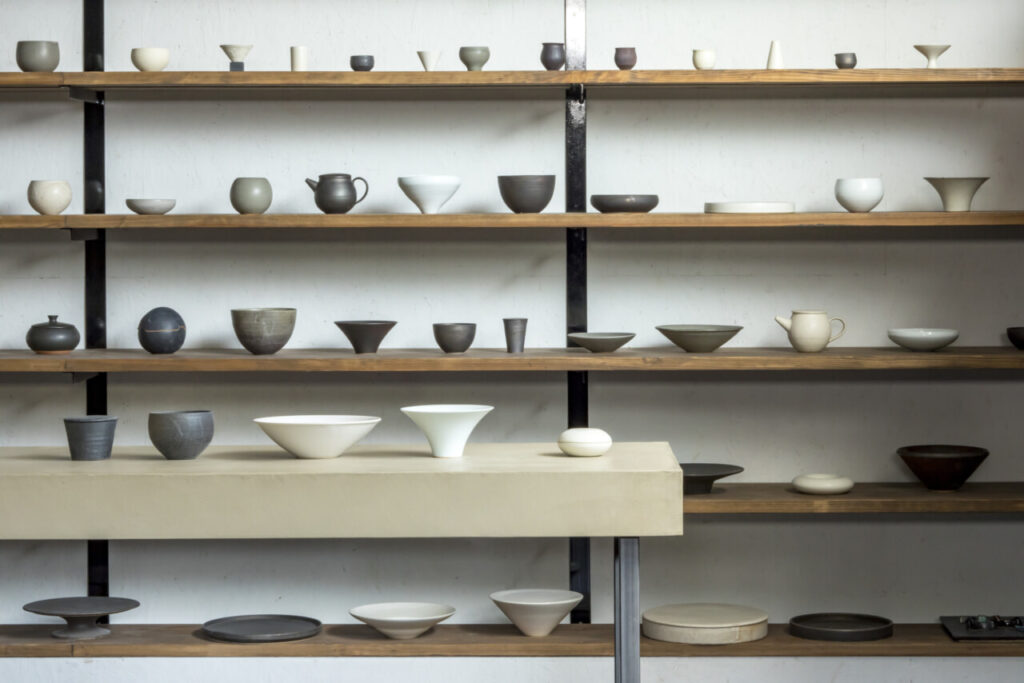
TOKINOHA’s tableware is known for being supported by professional chefs.
When Mr. Shimizu started working on simple tableware, TOKINOHA’s tableware caught the eye of a chef, who ordered a complete set of tableware for his restaurant. Another chef saw this and placed an order for TOKINOHA, and soon the orders began to flow in one after another. Shimizu’s willingness to make fine adjustments while incorporating the opinions of the chefs and people around him in order to meet the needs of the users led to trust and a reputation for his work.
Mr. Shimizu also learned a lot from his relationships with chefs.
He has learned how to be attentive to trends and how to incorporate them into his recipes, how to observe customers and find solutions to problems, and how to think about how to incorporate those solutions into a dish. He was inspired by the high level of mindset of the chefs.
Furthermore, as he worked more and more with the chefs, he also became aware of some things.
For example, what each customer requires in terms of the size, shape, texture, and ease of handling of the dishes, etc., varies widely, and there is no standard that all chefs can agree on. Therefore, in 2017, TOKINOHA launched “SOU-SIRO,” a brand dedicated to chefs that specializes in custom-made products, separately from TOKINOHA. Through this business, Shimizu’s involvement with even more chefs has deepened and broadened his awareness of the issues he faces as a business owner.
Making a Pottery Artist a “Sustainable Job
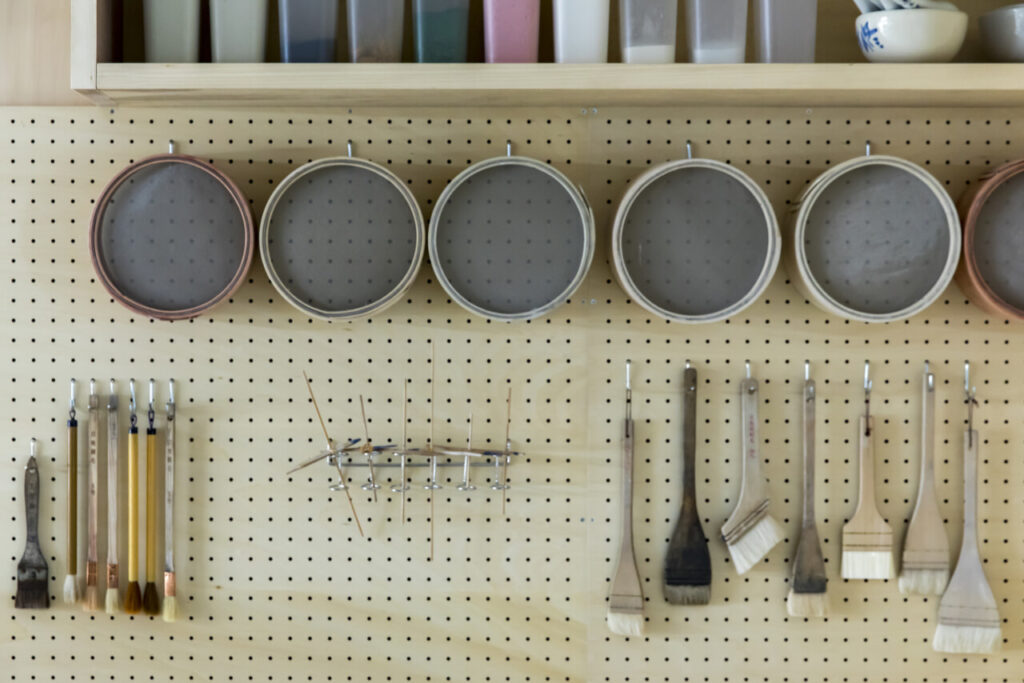
In fact, there was something that had stuck with Mr. Shimizu since his days at pottery school. There were few heirs among his classmates, and many of them were beginners in the ceramic arts.
There was a time when about 80% of the students were heirs. However, nowadays, more and more people do not choose to become potters because they see their parents’ hardships. On the other hand, those who enter the school are those who do not know such backgrounds. As a result, he has seen many people become stuck after becoming potters.
They can learn pottery techniques at school, but they rarely have the opportunity to learn how to make a living,” he said. That is why I want to focus my efforts on making ceramics a proper business, so that people can continue to work in it.
Creating a portal site exclusively for ceramic artists
One of the reasons why it is difficult for potters to make a living is the problem of ” distribution. Shimizu’s thoughts were reinforced when real stores closed and many potters lost their sales channels due to lifestyle changes that occurred after 2019.
In October 2019, hoping to help solve the problem, Shimizu launched “Soho,” a portal site for ceramic artists, and also worked on branding advice. He believed that if potters could develop the ability to sell their work on their own, without going through distribution, it would help revitalize the industry. Having felt that these activities had achieved a certain level of success, the “Soho” service was terminated at the end of November, 2022.
In order to promote the appeal of Kiyomizuyaki throughout Japan and to the world. Changes in the Way the Pottery Market is Held
It has been 11 years since TOKINOHA moved to the Kiyomizuyaki complex. When TOKINOHA first moved to the new location, even Mr. Shimizu, who was born in Kyoto, felt a sense of being away from home.
However, there have been changes as he continues to struggle as a member of the Kiyomizuyaki complex.
In October 2022, the “Kiyomizuyaki no Sato Festival” was held for the first time in three years, and at the suggestion of Mr. Shimizu, several changes were made to the way thepottery marketwas run. The first was to start from scratch every year to broaden the scope of new exhibitors. The second was to restrict exhibitors to those involved in the Kyoto and Kiyomizuyaki ceramic industry by prohibiting those from other prefectures from exhibiting at the festival.
This would not only give more people involved in pottery production in Kyoto a chance to exhibit, but would also establish the identity of Kiyomizuyaki and appeal to the whole country and the world. The festival also aimed to avoid the situation where visitors to the festival bought pottery they thought was Kiyomizu-yaki, only to find out that it was made in another prefecture. In November 2022, the TOKINOHA tag line will be renewed, and the concept will be changed to “Kiyomizuyaki for the appreciation of life. Mr. Shimizu’s own brand concept has also returned to the keyword “Kiyomizuyaki.
Even those who once said, “This is not Kiyomizuyaki,” have come to trust Mr. Shimizu, who spares no effort or ideas to revitalize the Kiyomizuyaki industry.
He says, “We have been challenged and nurtured here, and that is why we are here today. That’s why we are here today.
Mr. Shimizu’s sincere attitude will no doubt continue to update the Kiyomizu-yaki industry and the ceramic world.



